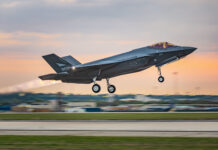We are well into the second year of the biggest war in Europe since the end of the Second World War. The Russian invasion of Ukraine has brought the issues of land mine warfare into the harsh light of day. In addition, unexploded ordnance (UXO), also referred to as ‘explosive remnants of war’ (ERW), has become a critical issue in Ukraine. Historically, Europe has had problems with old unexploded ordnance due to two World Wars, but the size and scale of this war greatly adds to the problem.
Land mines are problematic in international law. Many countries and numerous NGOs have long sought to ban land mines. Diplomacy and advocacy resulted in the drafting and widespread adoption of the 1997 Ottawa treaty banning anti-personnel land mines. Ukraine signed and ratified the treaty. However, Russia has never adopted this treaty. It is important to note that the Ottawa treaty bans anti-personnel land mines. It does not cover anti-vehicular mines or command-detonated (detonated remotely by human command, rather than by means of a sensor) mines. Anti-personnel mines are harder to detect, easier to detonate, smaller, and have historically proven to be more of a post-conflict menace to civilian populations than anti-vehicular mines.
Russia appears to have started limited use of both anti-personnel and anti-vehicular land mines in 2014, when the conflict started. Ukraine was already suffering deaths and injuries from both historic and post-2014 mines and UXO well before the 2022 invasion began. Ukraine has used anti-vehicular mines, which are compliant with their treaty status, in some instances. Russian use is far more prolific, and Russia has made frequent use of both anti-vehicular mines and anti-personnel mines. Furthermore, Human Rights Watch, an NGO which monitors land mine usage in the conflict, notes that Russia has frequently used booby-trap devices on anti-vehicular mines, making them into de facto anti-personnel mines. Human Rights Watch also notes 6 types of anti-personnel and 5 types of anti-vehicular mine in widespread use by Russian forces.

Credit: Kyiv City Local Government
Land mines are having an effect on the conflict and are performing their classical role of hindering major advances and affecting Ukrainian mobility on the battlefield. The progress of the current Ukrainian counteroffensive has been slowed by mines and other traditional obstacles. Behind the lines, mines and other remnants have had an adverse effect on civilians and the economy. Wide swathes of agricultural land, in a country that relies heavily on its agricultural sector for export as well as feeding its own people, have become dangerous to use. Tractors are heavy enough to detonate anti-vehicular mines. Numerous casualties in the agricultural sector have been reported and many thousands of hectares of land will need systematic clearing. Given the impact on agriculture, it is fair to say Russia is using mines as a method of economic warfare as a secondary mission.
Other munitions are having effects somewhat similar to land mines. Both sides of the conflict make use of cluster munitions. Neither country is party to the ban on such weapons, and both sides have used them in this struggle. Part of the perennial issue of cluster weapons is the failure rate in their detonation, a problem particularly noted in Soviet and Russian-manufactured ordnance. This leaves a lot of unexploded munitions laying around. Furthermore, the failure rate on conventional munitions is not zero, so large swathes of Ukraine have potentially dangerous ordnance laying around. Unexploded Grenades, projectiles, rockets, bombs, and shells of myriad type have turned up and have caused casualties all over the country.
With regard to mine clearing, there is a fundamental difference between combat breaching operations and thorough post-conflict demining. Combat operations broadly involve broadly locating minefields and breaching a lane through them where it is necessary. There simply are not enough sappers, time, or other resources to systematically clear minefields; the emphasis is on allowing manoeuvring forces to be able to operate. The exigencies of combat operations and mobile warfare mean that many, even most, of the mines will be left in place. Post-conflict demining seeks to return land to its former use, such as agriculture, and is thus far more through. Both sorts of mine clearing are underway in Ukraine and use similar technologies, albeit with different concepts of operation.
Finding the Problem
Locating landmines and minefields is the first component to demining. While some minefields are obvious, and even intentionally obvious so as to affect enemy plans, the location of individual mines is key to mine clearing. Often, the first indication of mines is a casualty or damage to a vehicle. Various technologies and procedures ranging from the rudimentary (mine probes – basically a sharp stick) all the way to the latest high technology.
Metal detectors are a primary component in both combat and humanitarian de-mining. CEIA in Italy and Vallon in Germany are industry leaders in this sector. The United Kingdom donated at least 1000 Vallon VMH3CS metal detectors for use in Ukraine, making this particular system one of the more commonly seen metal detectors in the conflict. Numerous CEIA systems are seen in use as well. Many have been bought by overseas donors or provided as military aid. Numerous systems from many other manufacturers have been seen at some point.

Credit: CEIA
Ground-penetrating radar has long been used in humanitarian mine clearance around the world. Japan has donated the ALIS system, originally developed for use in Cambodia, which combines ground-penetrating radar and traditional metal detection in a single handheld unit. UK-based company Chelton is known to make a similar system. Rumours abound of research to put ground-penetrating radar onto drones.
Mine detection dogs have a reasonably good history of use in humanitarian demining, although they can be quite vulnerable in combat operations. The European Union has funded the procurement, training, and logistics to provide 50 explosive and mine-detecting dogs for Ukraine. Trainers from Austria, Belgium, Finland, Luxembourg and Malta are involved in the project. Norway has provided 14 mine detection dogs in April 2023.
Thermal imaging technology has proven useful in finding mines. HALO Trust, a longstanding mine clearance NGO, among others, pioneered the use of thermal cameras to help find mines in its operations in Africa. Using the heat difference between night and day, and the principle that mines will cool at a different rate than the surrounding soil, various thermal imaging devices have proven useful in locating mines. Various efforts have been made to put these devices on drones. It should also be noted that this technology will likely be less use in winter. Other technologies have been mooted for use in mine detection. Australia’s CSIRO is known to be working on magnetic resonance as a technique.
Removing the Problem
Locating a minefield and plotting the location of individual mines is only part of the solution. It might be enough to know where a minefield is in order to plot a military operation, but military necessity may require a lane to be cleared through one or a route to be re-opened. Civilian use and re-occupation of land requires clearance, not just knowledge.
A large number of techniques are in use that are quite dangerous and labour-intensive. Grappling hooks and ropes can be used to remotely detonate mines, as long as their fuzes function. Small explosive charges can be manually placed on mines to destroy them. Bangalore torpedoes, which are long pole-shaped segmented explosive charges can be pushed into a minefield and will detonate to clear a lane. All of these techniques place the sapper performing them at great risk and, in combat breaching, expose them to enemy fire. Yet all have been seen in Ukraine.
An extremely useful technology, and one that is quite visibly seen in use on social media in Ukraine is the mine-clearing line charge (MICLIC). A MICLIC system uses a small rocket to fire a line charge – essentially a rope made of explosive material. The line charge detonates, clearing a lane through a minefield. A number of MICLIC systems are in use around the world. The US M58 system, which clears an 8 m wide lane 100 m long, has been donated to the Ukrainians and has been seen in use. The UK and Turkey both make systems of similar capability, but neither has been noted in the conflict so far. The same cannot be said for Russia’s UR-77 line clearing vehicle. It is known that Ukraine has captured UR-77 units from Russia, and both sides appear to have used the UR-77 in combat.
Ploughs, flails, rollers, and tillers attached to heavy armoured vehicles have a long history in mine clearance efforts, both in direct combat roles and in humanitarian operations. The principle is simple – place something in front of a relatively survivable vehicle that will absorb the blast and explosion of the mine. These parts do take damage and need replacement over time but are literally cheap bits of chain or inexpensive steel parts. Such accessories can be put on the front of existing vehicles, such as tanks. Mine ploughs for T-72 tanks have been donated to Ukraine. Ukraine itself is a manufacturer of the KMT-series of mine ploughs and rollers for use on Soviet-vintage tanks. Open-source intelligence accounts on social media have noted the presence of mine rollers on US-supplied Stryker vehicles. The Russians use the TMT-S mine roller, which fits on any of its T-72 or later tanks.

Credit: US Army/Spc. Jacob Nunnenkamp
In addition, mechanical aids like flails and tillers are integral design features in dedicated mine clearance vehicles. A number of examples of such systems are in use in the current conflict. The German Keiler vehicle, made by Rheinmetall is a classic example. The base platform is an old US M48 tank hull, and it uses a chain flail to clear mines. The Bundeswehr procured 24 of these systems decades ago but has donated four of them to Ukraine. The Wisent, by Germany’s FFG is based on the Leopard 1 chassis and uses a large mine plough in front of it. The plough itself is made by Pearson Engineering in the UK. Six Wisent systems are reported to have been transferred to Ukraine earlier this summer.
Hydrema of Denmark produces a truck-based system, less survivable in direct enemy contact but still useful, called the 910MCV. Several are believed to be in use and Hydrema is believed to be negotiating to produce systems in Ukraine. At least one mine-clearing system from UK company Armtrac, which uses tillers and flails, has been sent to the Ukrainian government. At least one more Armtrac system is in use with an NGO for humanitarian mine clearance.
Robotics
The inherent dangers in mine clearing have long made it a ripe sector for unmanned ground vehicles (UGVs). Many dangerous tasks can be done remotely, and some scarce skilled labour can be preserved for other tasks. By engineering the human occupant out of a demining system, its survivability in both combat environments and humanitarian demining can be greatly increased.
A key industry leader in this space is DOK-ING, a Croatian firm based in Zagreb with several decades of experience making heavy robotic systems for demining, combat engineering, and other tasks such as firefighting. Their MV-4 system was adopted by the US Army as the M160 some years ago, and is highly useful in anti-personnel mine clearing and various sapper tasks. It proved to be extremely robust in combat engineering and counter-IED operations in Afghanistan. DOK-ING’s larger MV-10 is designed against anti-vehicular as well as anti-personnel mines. It weighs approximately 21 tonnes, is powered by a Caterpillar diesel engine, and uses a dual flail and plough system. Both have a credible track record in de-mining operations around the world. A number of DOK-ING systems are known to be in use, with a reported total of at least 25 systems being planned for delivery by the end of 2023. Some reports indicate that DOK-ING might even open a plant in Croatia, in conjunction with the Ukrainian firm A3Tech.

Credit: Dan Kaszeta
DOK-ING is not the only player in unmanned systems. Their main rivals appear to be Global Clearance Solutions from Switzerland, who make the GCS-100 and GCS-200 robotic vehicles for de-mining. As of March, 2023, at least five GCS systems were in use in Ukraine and in July, the company reported opening an in-country support presence in Ukraine. Reports indicate that at least 20 systems will be delivered by the end of the year. Another manufacturer is the Slovak firm Božena. Their Božena-4 and Božena-5 systems were originally designed to meet Czech requirements. The Slovak defence ministry reports that 8 Božena-4 and 2 Božena-5 systems are in service in Ukraine.
Russia operates some UGVs for demining. Russia has been seen using the Uran-6 unmanned system, which is a copy of the Croatian DOK-ING MV-4 system. At least one such system has been lost in combat by the Russians. Another system is the Prokhod-1, which is a robotic armoured vehicle with a BRM-3MA chassis as its base and a TMT-S mine-roller.
The Future
The mine problem seems set to get worse long before it will get better. Russia certainly has not stopped laying mines and a renewed Russian offensive might see Ukraine use more anti-vehicular mines. If the ground war threatens to enter Russia itself, we may have the prospect of mines within Russia that will also need eventual clearing.
What is certain, though, is the scope of the problem is gigantic. Ukraine is short on trained sappers and technicians for humanitarian mine clearance, so there is much scope for efforts to increase the number of people working on the problem, both right now and into the future. Even optimistic observers will probably concede that the real work cannot fully begin until the conflict is over, and that clearance of mines will take many years. There will certainly be scope for new technologies, large government and NGO efforts for mine clearing, and a large demand for the whole spectrum of mine clearance products.
Dan Kaszeta











